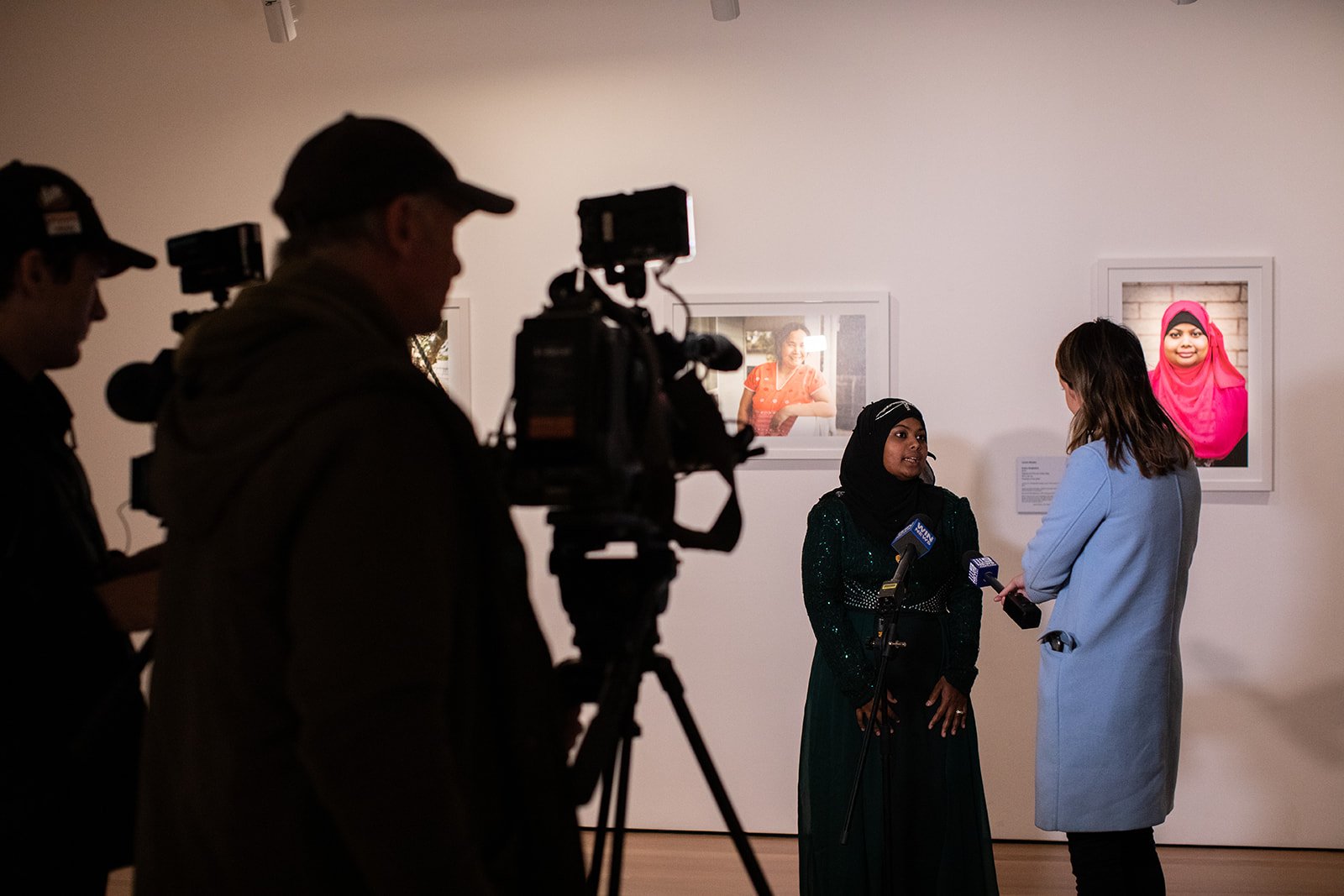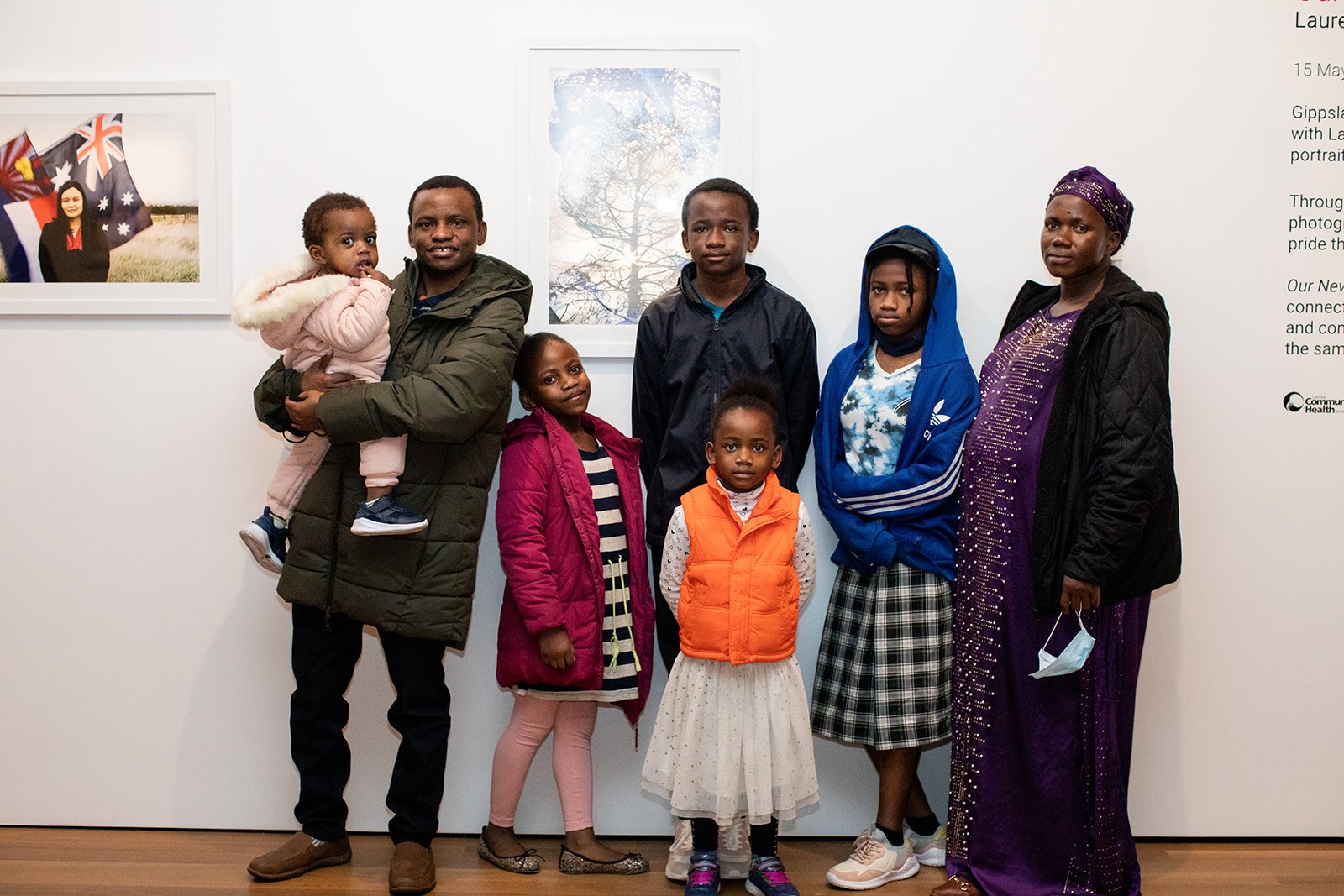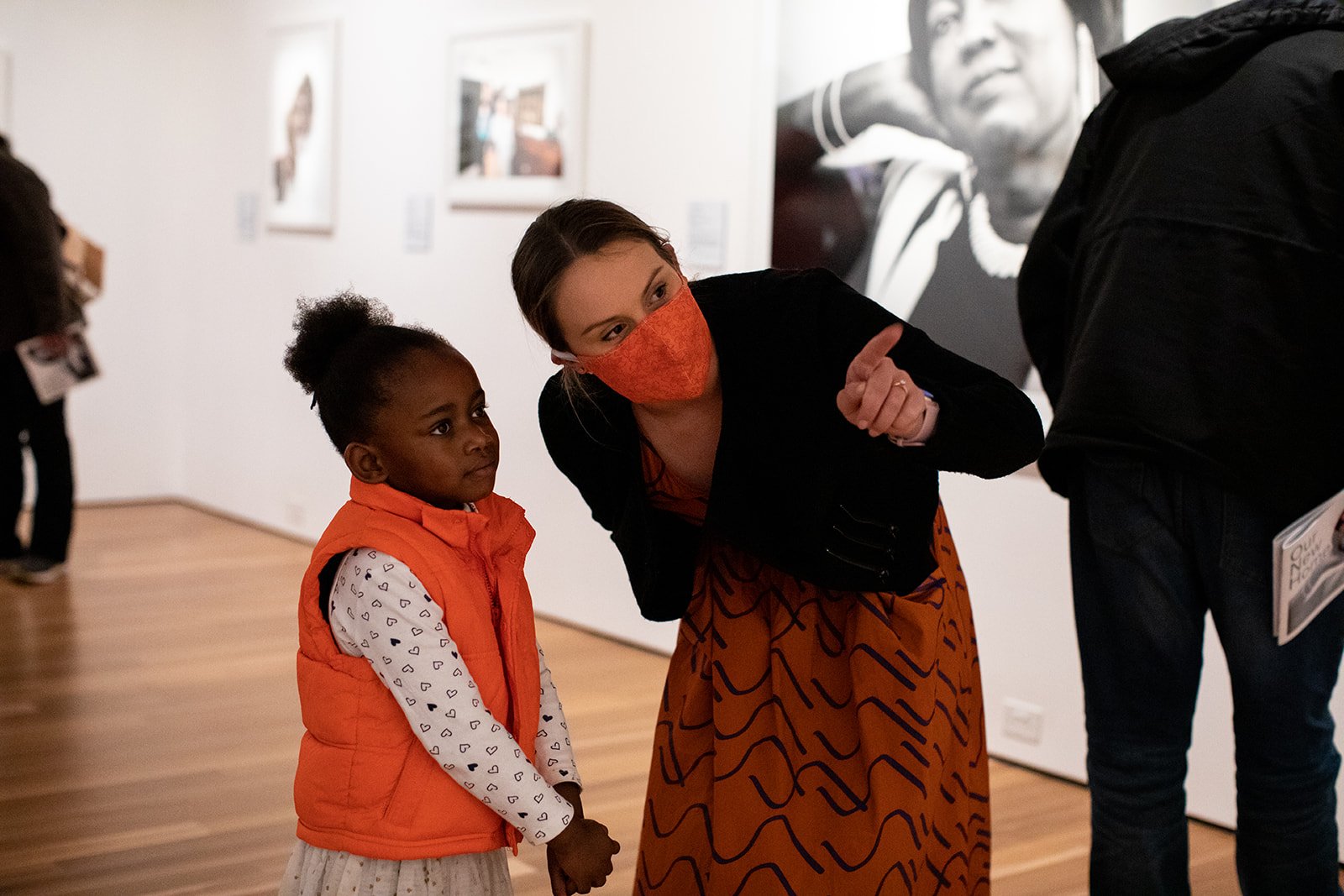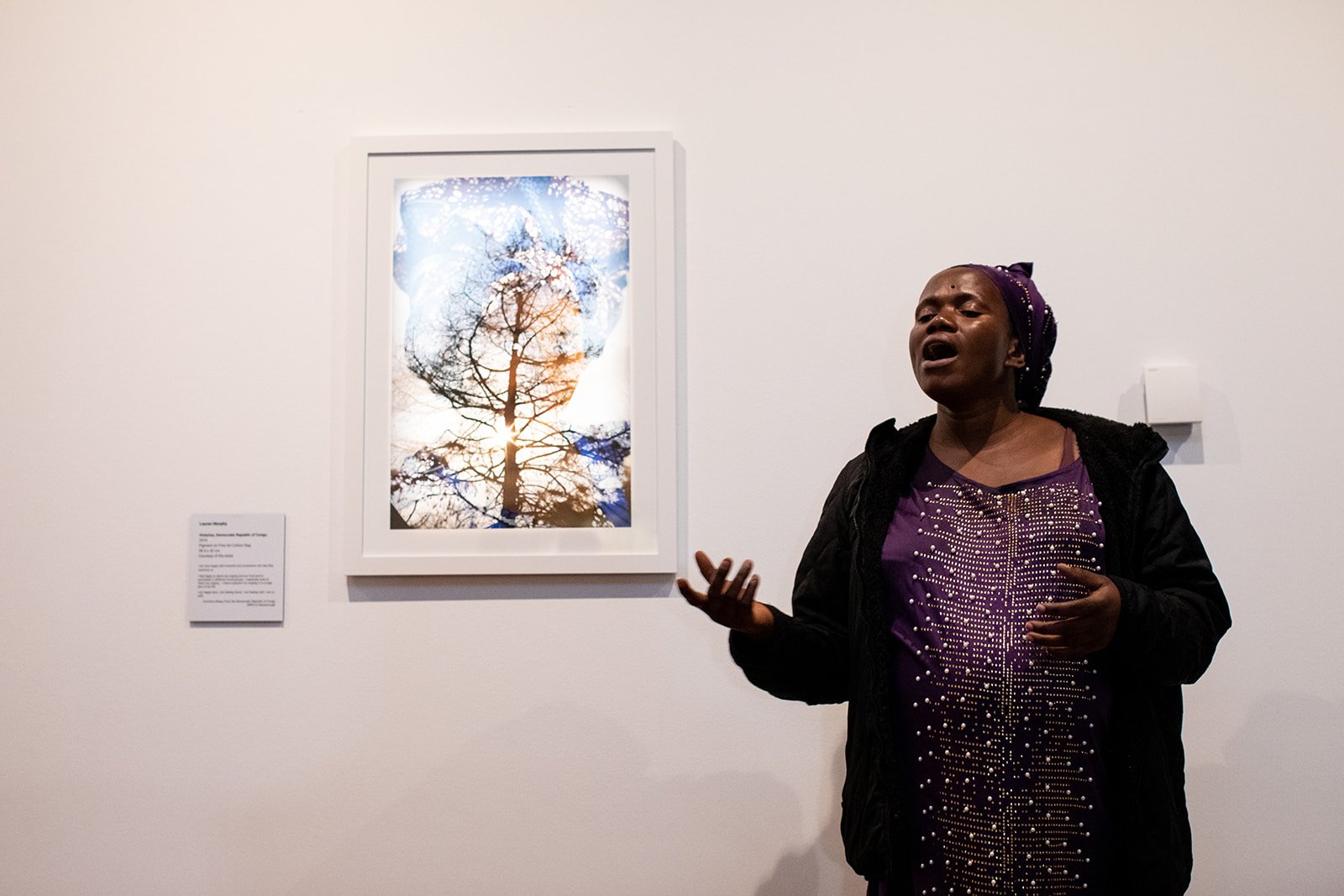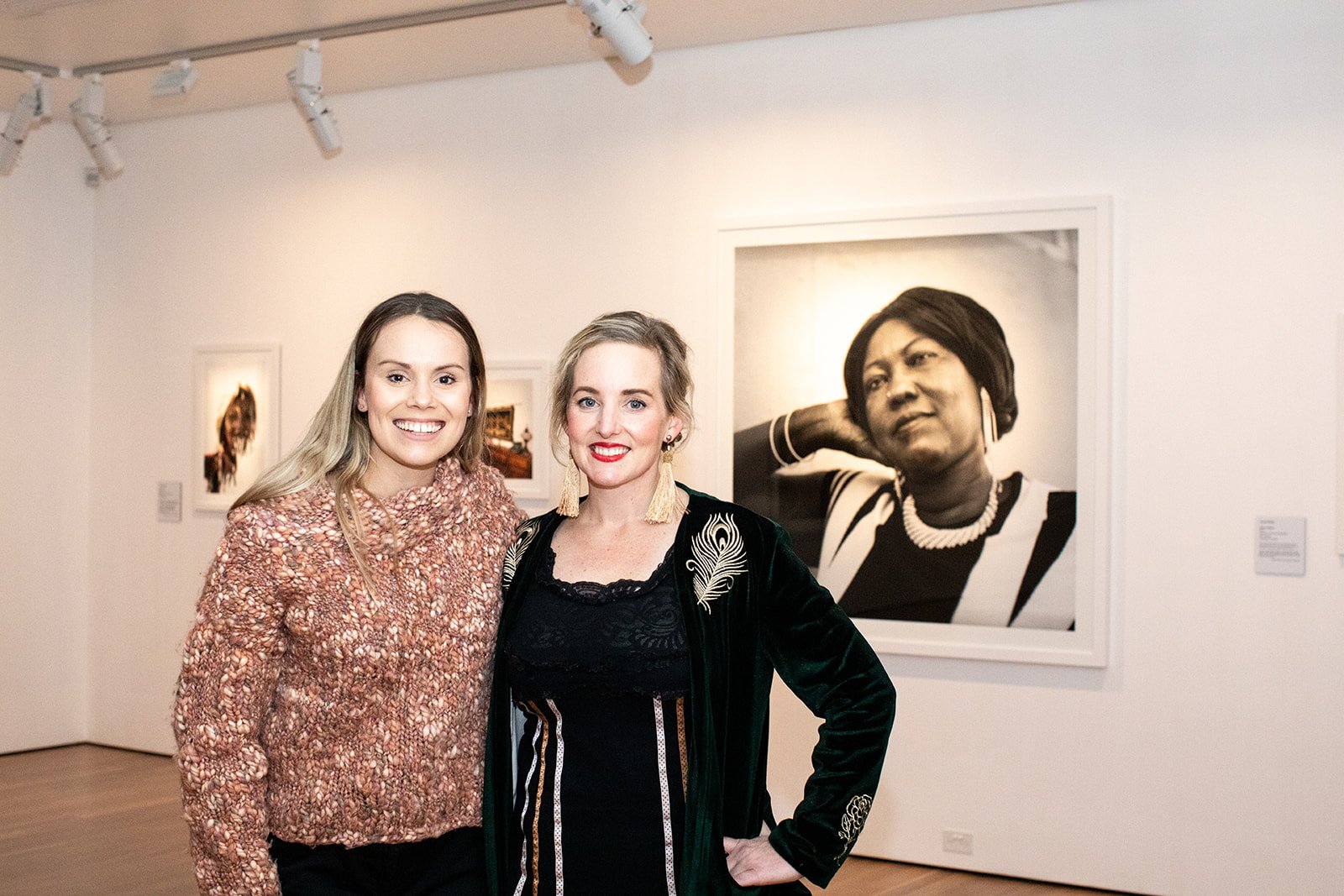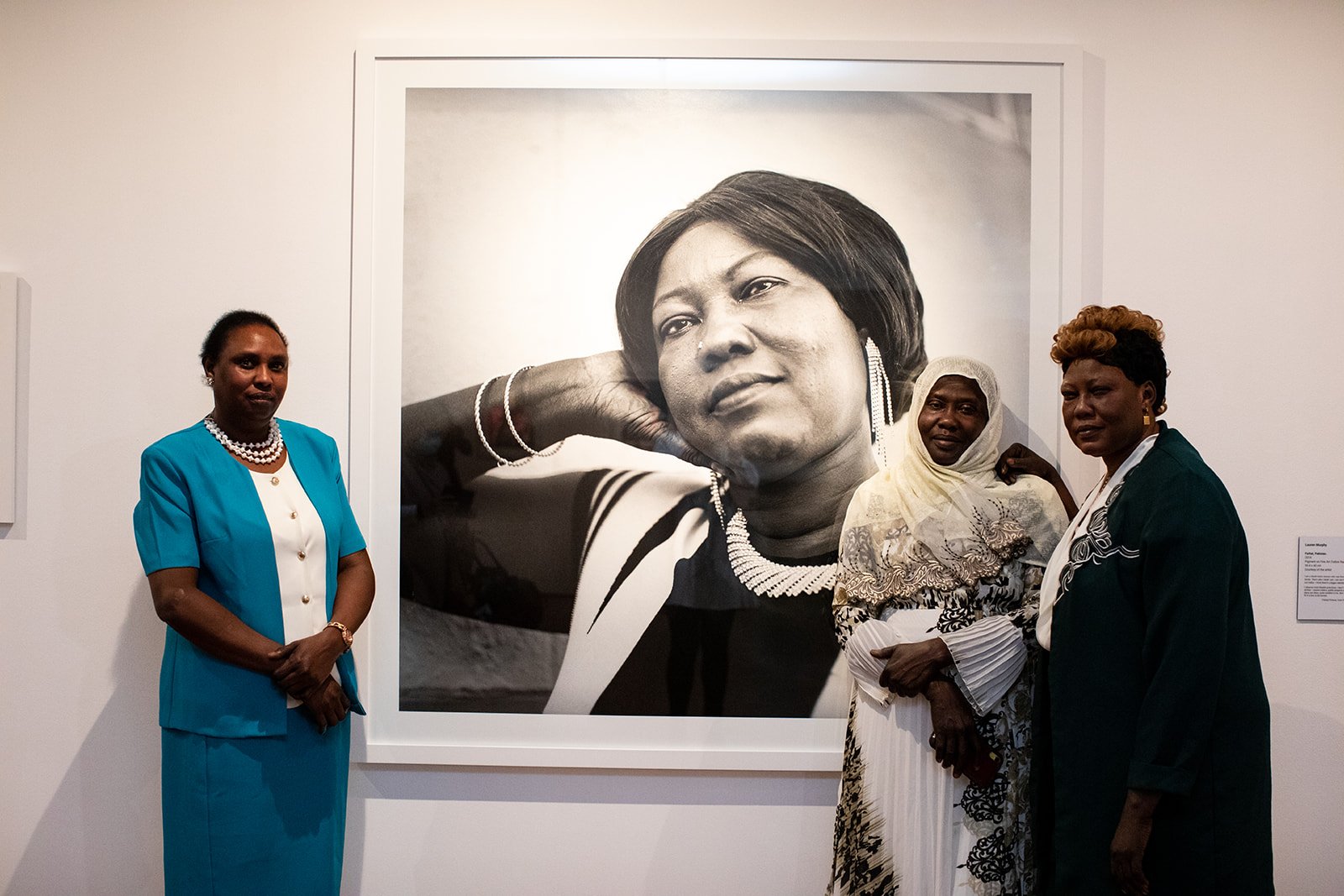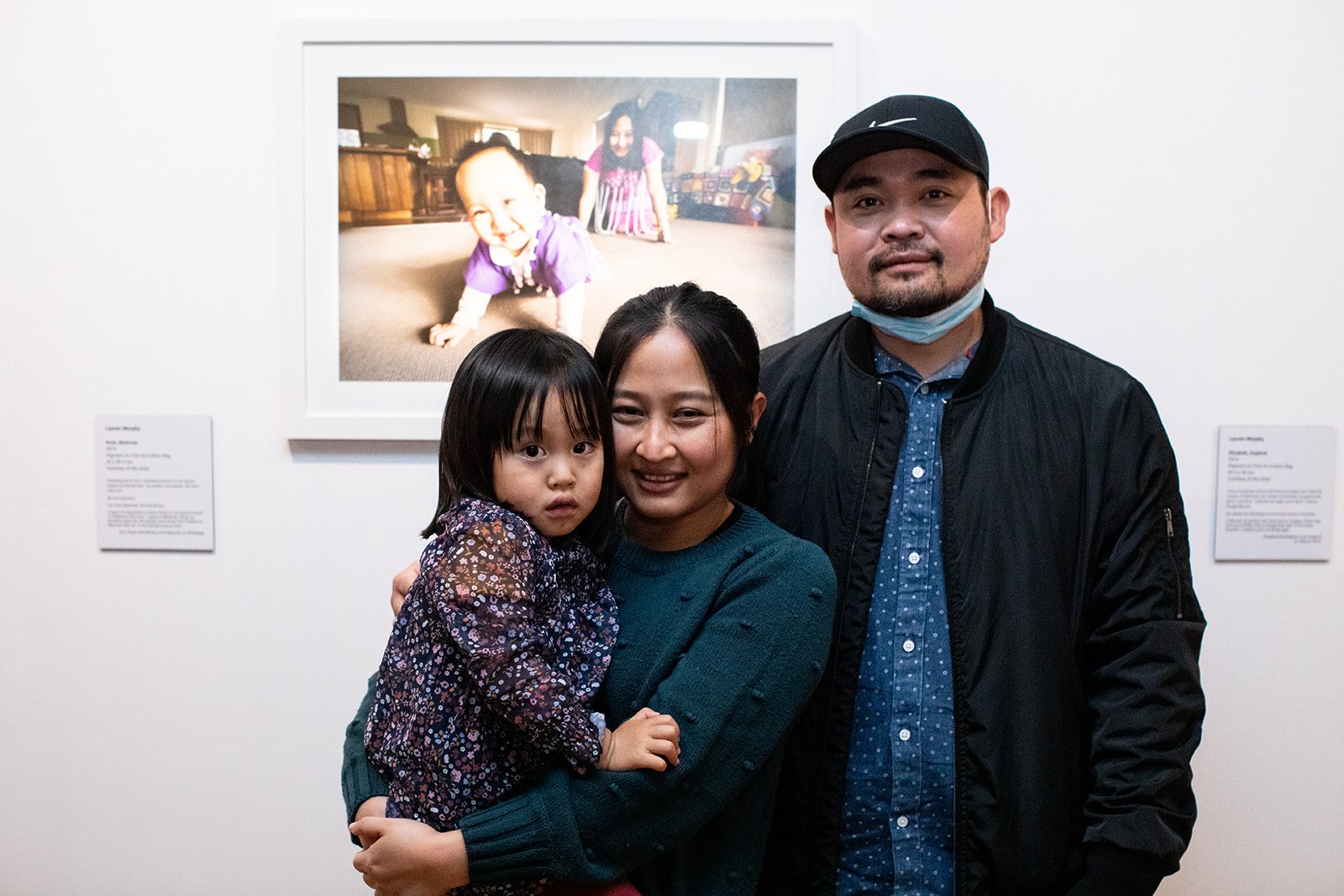Our New Home is a photographic exhibition that captures the lived experience of refugee and migrant women in Gippsland.
Our New Home serves as a reminder to pause and consider another’s life journey, as no two experiences are the same.
“All the people back home, I think about them. If I have a good job, I can support them.” Nylok Myong from South Sudan to Morwell.
Latrobe Community Health Service commissioned myself to explore the theme of movement from across the globe to Gippsland.
Using digital and medium format photography – captured via film, environmental or doubly exposed photographs – I captured eighteen remarkable women. Latrobe Community Health Service’s communications advisor, former journalist Emma Watson, interviewed each of the women and drafted their written profiles.
The result is Our New Home.
Each woman is captured within her natural environment pondering the grief, loss, love, resilience, strength and pride she has endured; she endures. The imagery evokes within the viewer a sense of the vulnerability, upheaval, hope and restoration each of these women has experienced.
Our New Home challenges common misconceptions of what it is to be culturally and linguistically diverse in Australia. It asks the viewer to connect with difference and to share a sense of pride in the communities and people who call Gippsland home.
Paw Shee Wah Win, from Thailand to Wonthaggi. “I pray for safe travels before I drive and for a nice sleep with no nightmares.”
“My name is victorina.
I am a mother. I am a wife. I am a singer.”
Victorina Aheyo, from the Democratic Republic of Congo (DRC) to Newborough.
The Our New Home project is very deep to my heart, and feels like some of the most meaningful photography I’ve undertaken.
When I was presented with the opportunity to team with Latrobe Community Health Service on this project, I was overjoyed and knew it would be an undertaking I would be grateful for. At the time I was unsure what the outcomes would be, but the worth lay in providing an opportunity for these women to share their stories and have their voices respectfully heard.
Before I dedicated myself full time to photography, I was a social worker for six years. I worked in the settlement field, primarily with newly-arrived refugees. My years in this role educated me about the impact of torture and other traumatic events, and the complexities in rebuilding shattered lives. It filled me with lessons in resilience and gratitude, and led to the formation of lasting friendships. The connections and conversations I had in my various roles shaped me as a person and continue to influence my life in positive ways.
My fascination with images started at a young age. My grandparents lost everything in the Ash Wednesday bushfire. It was such a huge loss, and growing up without access to those family stories made me realise how important photography is in engaging with our history. Luckily, I was able to engage with my mother’s history visually; she migrated from Scotland with her family when she was 12 years old and had a few photographs of her life to share with us.
The merging of these experiences developed a deep responsibility in myself to document our stories so we have a visual anchor.
“We knew this was a country where our girls could do something with their lives.” Lidia Di Ciero, from Italy to Morwell.
Many of the refugees I worked with as a social worker had no possessions – not a single photograph of their life before arriving in Australia. As a photographer, I have the privilege of supporting new beginnings. When you show someone their first family photo, well that is when I’ve truly felt the power a single image can play in someone's story.
I feel a huge responsibility with this project. It takes great courage to share your story, especially when there are chances it may be met with racism. When we met with each participant, I was conscious of the brief time I had to capture a glimpse of their lives. I hold a lot of power as a photographer, and all of these women trusted me. My hope is that when they view their portrait, they can see the admiration, strength and kindness that I see in them.
To be heard. To be valued. To be welcomed. That is what I hope this exhibition means for people. I want people to value diversity; to see it as a strength rather than something to fear.
We don’t grow without pausing to reflect, on ourselves and those around us.
Our New Home is a chance to do exactly that.
It was an absolute honour completing this project with Emma. Her compassion, professionalism and dedication shone throughout it. Although our project and exhibition time was heavily impacted by the pandemic, we were grateful for our small gathering at Latrobe Regional Gallery with some of the women. Our deepest thanks to staff for supporting this special celebration.
Huge thanks to Paul Dodd for making the special effort to come and video the exhibition. After the cancelling of our opening night and continued lockdowns, many women were not able to attend. This video allowed them to see it and share with family overseas.








